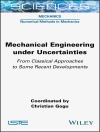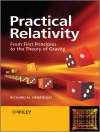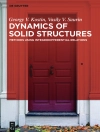The only work available to treat the theory of turbulent flow with suspended particles, this book also includes a section on simulation methods, comparing the model results obtained with the PDF method to those obtained with other techniques, such as DNS, LES and RANS.
Written by experienced scientists with background in oil and gas processing, this book is applicable to a wide range of industries — from the petrol industry and industrial chemistry to food and water processing.
Содержание
Preface
Introduction
1 Motion of Particles and Heat Exchange in Homogeneous Isotropic Turbulence
2 Motion of Particles in Gradient Turbulent Flows
3 Heat Exchange of Particles in Gradient Turbulent Flows
4 Collisions of Particles in a Turbulent Flow
5 Relative Dispersion and Clustering of Monodispersed Particles in Homogeneous Turbulence
6 Collision and Clustering of Bidispersed Particles in Homogeneous Turbulence
Об авторе
Emmanuil G. Sinaiski completed the Lomonossow-State University, Moscow, Russia, where he obtained his Ph D in physics and mathematics. He received his Dr Eng. Sci. degree in petroleum engineering from Gubkin-State University of Oil&Gas, Moscow, Russia where he was later appointed to a full professorship. Professor Sinaiski has published numerous books and scientific articles, among them ‘Separation of Multiphase, Multicomponent Systems’ published in 2007 and `Statistical Microhydrodynamics? published in 2008 by Wiley-VCH. His fields of interest are applied mathematics, fluid mechanics, physicochemical hydrodynamics, chemical and petroleum engineering.
Leonid I. Zaichik studied thermophysics at the Moscow Power Engineering Institute and received his Ph D in 1976. Thereafter he worked at the Krzhihanovsky Power Engineering Institute and the Institute for High Temperature of the Russian Academy of Sciences, Moscow, Russia. Since 2006 he is head of the Laboratory of Theoretical Hydrodynamics at the Nuclear Safety Institute of the Russian Academy of Sciences and professor at the Moscow Institute of Physics and Technology. His scientific interests are mathematical modelling, turbulence, multiphase flows, aerosol mechanics, hydrodynamic stability, and combustion. He has written five books and over 300 papers.
Vladimir M. Alipchenkov studied nuclear physics at the Moscow Institute of Physics and Technology and received his Ph D in 1983. He then worked at the Kurchatov Institute of Atomic Energy and the Electrogorsk Research Center of Nuclear Plants Safety, Moscow, Russia. Since 2000 he is a leading researcher at the Institute for High Temperatures of the Russian Academy of Sciences. His areas of interest include multiphase flows, turbulence, and plasma physics. He has written two books and over 100 papers published in refereed journals.












